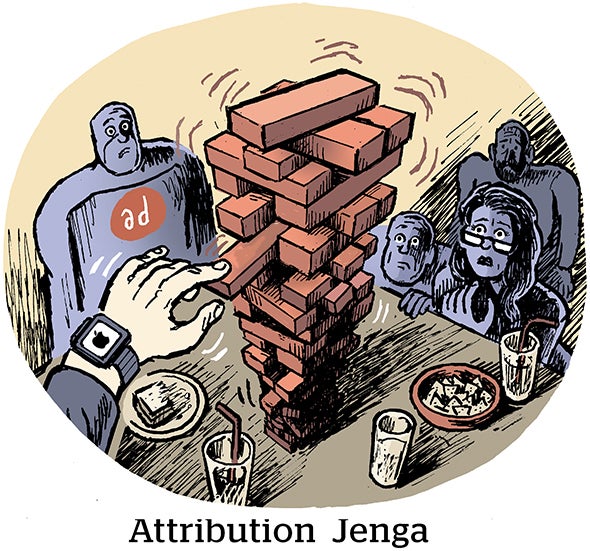 With more than 300 brick and mortar stores in the U.S., retail is still a core focus for David’s Bridal. But web and mobile are becoming increasingly important in reaching busy brides on the go.
With more than 300 brick and mortar stores in the U.S., retail is still a core focus for David’s Bridal. But web and mobile are becoming increasingly important in reaching busy brides on the go.
“We’ve started thinking that our customer is going to buy from the channel she’s most comfortable with at the moment she’s ready, and we are positioning ourselves to be able to support that,” says Jerry Baklycki, director of interactive technology with wedding day giants David’s Bridal, who talked with Chief Marketer at the recent IBM Smarter Commerce Summit. “I was skeptical seven years ago that we would have a high number of brides buying a dress online, but we had well over 50 dresses in our first five days of selling online seven years ago, and it’s grown from there very quickly,” Baklycki says.
Baklycki and his team work directly with the company’s marketing and digital marketing groups, handing all technology supporting ecommerce, web presence, campaign management, social and mobile. At the end of the day, David’s is primarily physical retail store, so part of the digital challenge is keeping customers informed, educating them rapidly on what it means to buy a bridal dress and all the other facets that go with it.
“While we do look at where the sale is going to happen, we need to be an educational tool for her, as well as a marketing tool and then the transaction happens wherever she’s comfortable,” Baklycki says.
The Ecommerce Challenge
While the majority of David’s Bridal sales are in-store and probably will remain that way, there are challenges that ecommerce presents the brand. For instance, what happens if a customer decides to buy online after trying something on in the store? How is the sale attributed to a salesperson working on commission in a store?
David’s has enabled all of its stores with the ability to buy online, installing tablets in-store allow access to web-only offerings.
“Store associates can find any item that’s not in stock in the store. The ecommerce promotions engine can track the sale back to the associate, give them commission and be able to offer things like free shipping back to the bride. We use everything from IBM out of the box to drive that. Brides want to manage their sale and information any way that works best for her, the challenge is keeping up with her demand, understanding what she wants and putting the right technology and business process there to support that,” Baklycki says.
Anytime a customer registers with David’s Bridal as a bride, the company asks for an event date. “That is self-serving for two reasons: It lets us know what’s most available to you at this time and how far out you are. If you’re six weeks from your wedding, you have a very different product assortment you should be looking at, versus if you are nine months out from your wedding. It helps her because we know when to stop talking to her because at a certain point she’s done buying, she’s no longer a bride. With bridesmaids, we do the same thing,” Baklycki says.
Viewing customers by their role (bride, bridesmaid) and the event date helps marketers change marketing messaging, as well as how they deal with her in the store by understanding what she has and hasn’t bought, and when the big event is coming up on the calendar.
Baklycki says a little over half of David’s Bridal web traffic is coming from mobile devices, with transactions at less than half, while customers and opening two-thirds to three-quarters of David’s emails on mobile. The brand’s mobile and online strategies are very integrated, and the team looks at everything it does in terms of marketing with both in mind.
“I don’t think the device is going to stop her from buying, it’s the experience for her and how we craft the experience to be right on that device. Whether we’re going through mobile web, native app development—whatever the approach is, we have to go back and ask what’s going to work for her and what she needs. The consistency has to be there. We are upgrading to the Version 7 platform of IBM Commerce, which allows us to take advantage of all the mobile capabilities, and take advantage of responsive design. We can’t just plan for the desktop user,” Baklycki says.



